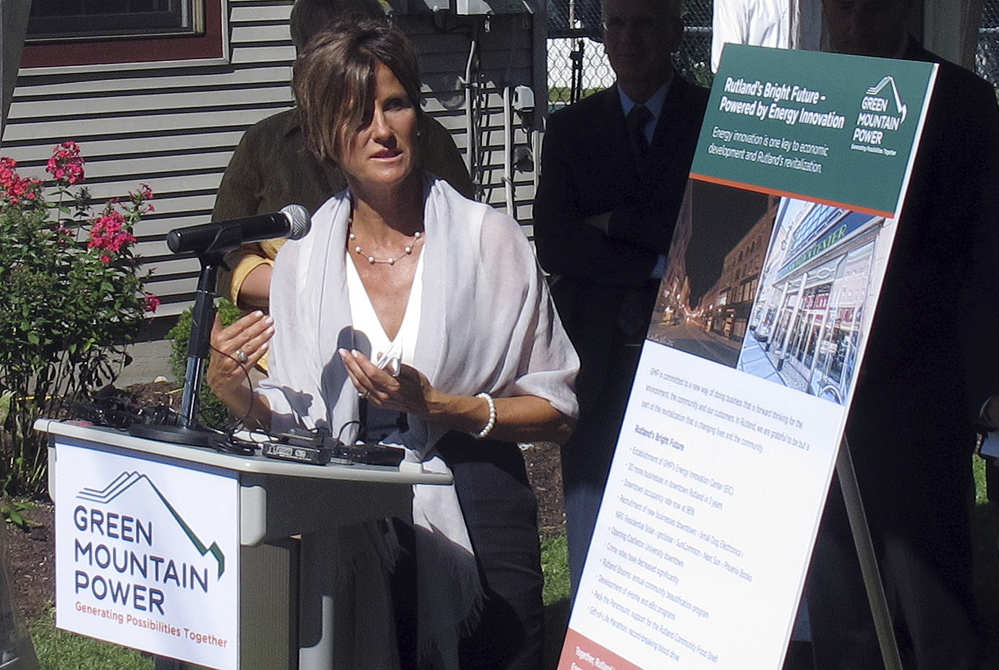RUTLAND, Vt. —The city of Rutland is assuming the mantle as the “solar capital of New England.”
Officials with Green Mountain Power, Vermont’s biggest utility, have been working for years to change the way the city of 16,500 produces and uses electricity.
They announced the new designation Tuesday, saying a survey they conducted found that the city produces more electricity per capita from the sun than any other in New England. It follows the recent completion of the 2.5-megawatt Stafford Hill solar project atop an old landfill near the high school.
The 7,722 solar panels brought the city’s total solar power capacity to just under 7.8 megawatts. There are 51 homes, businesses and other projects currently generating clean energy in the city. The energy produced is enough to provide 1,600 average homes with electricity for a year.
“Ideally we want to stay ahead and we want to stay ahead through innovation,” GMP President Mary Powell said outside a home covered with solar panels. “We want to stay ahead by thinking about how do we continue to work collaboratively to push solar.”
Vermont has seen a surge in solar power in the last few years as the state works to increase its reliance on renewable sources of energy, such as solar and wind. In some communities, proposals for solar arrays have been met with strong opposition for reasons including costs and aesthetics.
In addition to generating power locally in Rutland, GMP is working with landowners to reduce electricity consumption by helping them insulate their homes and businesses and using alternative heating and cooling technologies that reduce the use of traditional fossil fuels.
The $10 million Stafford Hill solar project uses battery storage so that it can power the emergency shelter at the high school. It is part of a broader project to create what Powell called a “micro grid” so that when power is disrupted during storms or other events, there will still be electricity available locally.
Rutland Mayor Christopher Louras said his city is unique in its focus on local generation and not traditional power poles and transmission lines, which he called a 19th-century model.
“That’s not what we’re doing here,” Louras said. “This is a 21st-century model.”
Send questions/comments to the editors.



Success. Please wait for the page to reload. If the page does not reload within 5 seconds, please refresh the page.
Enter your email and password to access comments.
Hi, to comment on stories you must . This profile is in addition to your subscription and website login.
Already have a commenting profile? .
Invalid username/password.
Please check your email to confirm and complete your registration.
Only subscribers are eligible to post comments. Please subscribe or login first for digital access. Here’s why.
Use the form below to reset your password. When you've submitted your account email, we will send an email with a reset code.